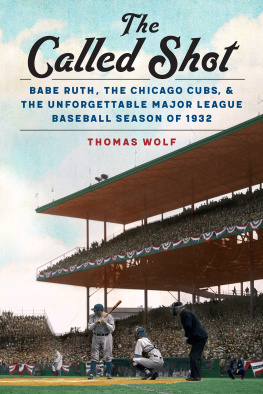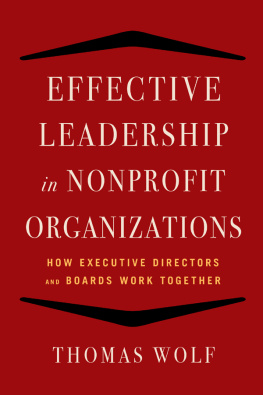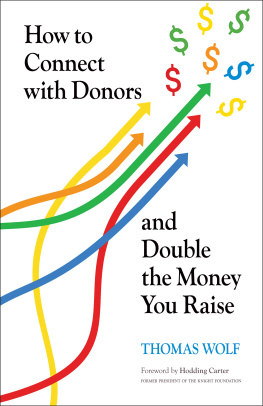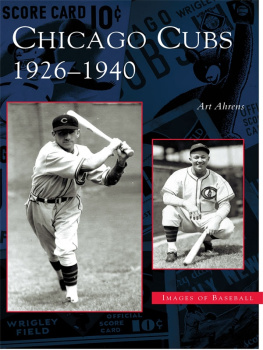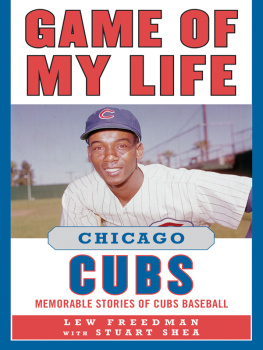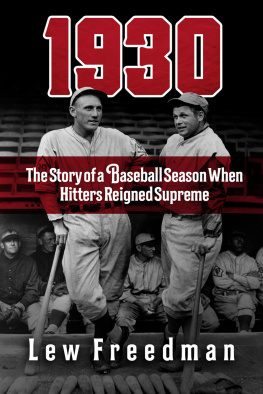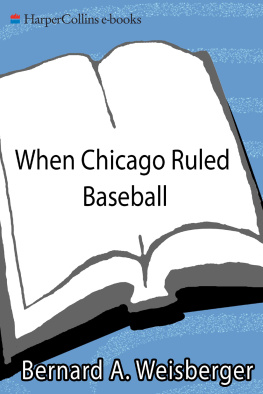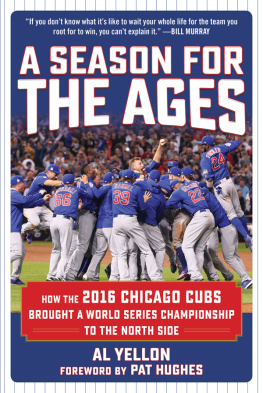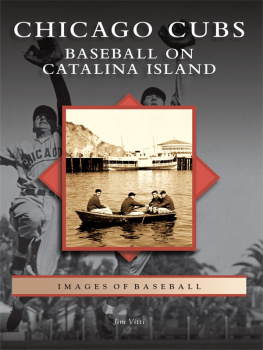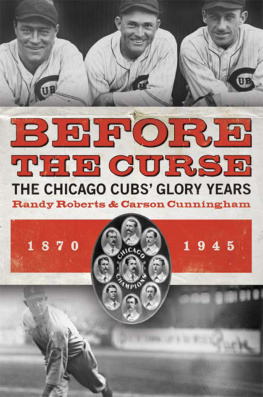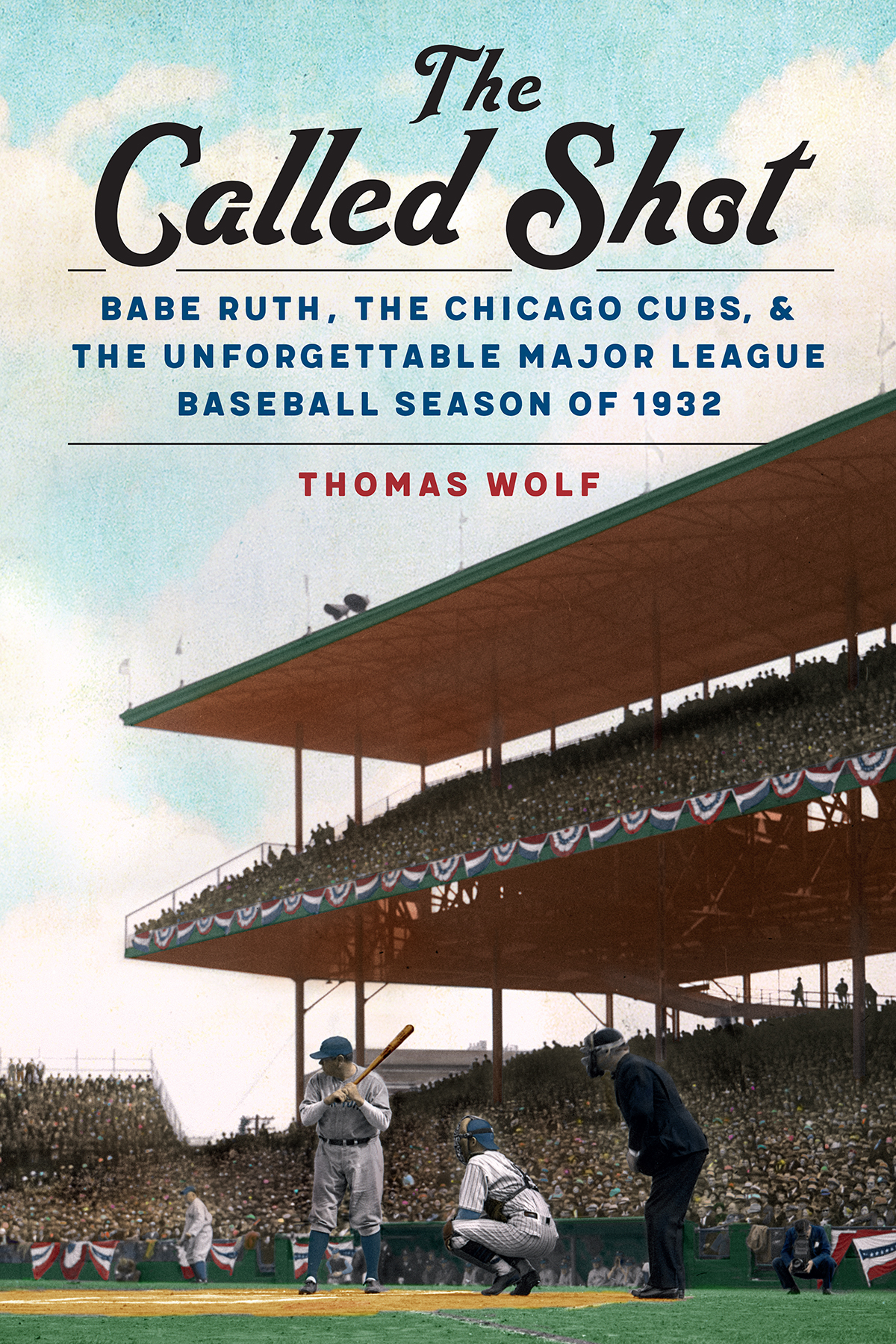
The Called Shot provides readers a multilayered narrative of politics, pop culture, American history, and baseball. Going far beyond the games on the field, Thomas Wolfs book gives readers a glimpse into a season they only thought they knew.
William Steele, author of Going the Distance: The Life and Works of W. P. Kinsella
The gifted writer Thomas Wolf has dug deeply into the colorful and tumultuous culture of the United States between the world wars. He has produced a memorable and readable book that sheds new light on both baseball history and American history.
Lee Lowenfish, author of the award-winning Branch Rickey: Baseballs Ferocious Gentleman
In 1932 the Chicago Cubs defied the experts and won the National League pennant despite such distractions as a jilted lover shooting their shortstop and a front-page gambling scandal embarrassing several star players. Thomas Wolf provides a thoroughly researched, gripping account of one of the most fascinating eras in baseball history, capturing both the spirit of the times and its memorable figures in colorful, vivid detail.
Jack Bales, author of Before They Were the Cubs: The Early Years of Chicagos First Professional Baseball Team
The Called Shot
Babe Ruth, the Chicago Cubs, and the Unforgettable Major League Baseball Season of 1932
Thomas Wolf
University of Nebraska Press | Lincoln
2020 by Thomas Wolf.
Cover designed by University of Nebraska Press; cover image: Babe Ruth at Bat During the 1932 World Series. Courtesy the Keystone-Mast Collection, UCR /California Museum of Photography, University of California, Riverside.
Author photo John Wolf.
All rights reserved.
Portions of chapter 16 previously appeared in The Warden Takes a Murderer to the World Series, Cooperstown Symposium on Baseball and American Culture (20052006): 20113, and The Golden Era of Prison Baseball and the Revenge of Casey Coburn, Cooperstown Symposium on Baseball and American Culture (20172018): 11625.
Library of Congress Cataloging-in-Publication Data
Names: Wolf, Thomas, 1947, author.
Title: The called shot: Babe Ruth, the Chicago Cubs, and the unforgettable major league baseball season of 1932 / Thomas Wolf.
Description: Lincoln: University of Nebraska Press, 2020. |Includes bibliographical references and index. | Summary: The story of the 1932 baseball season and Babe Ruths called shotProvided by publisher.
Identifiers: LCCN 2019035338
ISBN 9780803255241 (hardback)
ISBN 9781496221681 (epub)
ISBN 9781496221698 (mobi)
ISBN 9781496221704 (pdf)
Subjects: LCSH : BaseballUnited StatesHistory20th century. | Ruth, Babe, 18951948. | New York Yankees (Baseball team)History20th century. | Chicago Cubs (Baseball team)History20th century.
Classification: LCC GV 863. A 1 W 648 2020 | DDC 796.3570973dc23
LC record available at https://lccn.loc.gov/2019035338
The publisher does not have any control over and does not assume any responsibility for author or third-party websites or their content.
For Patricia Lee Bryan
Contents
I started work on this book many years ago, and Ive benefitted greatly from other writers, researchers, friends, and readers who have offered advice and constructive criticism. I am grateful to an entire team of collaborators on this project.
Thanks to Steve Wendl and the late Richard Snavely who first told me the tale of Snap Hortman and generated my interest in telling a story about the 1932 baseball season and Babe Ruths called shot.
I am especially fortunate to have a superb agent, Stacey Glick, who has been persistent, insightful, prodding, and supportive during the years this book took shape. I greatly appreciate Rob Taylor, Ann Baker, Courtney Ochsner, and the team at the University of Nebraska Press for their patience, editorial expertise, belief in this project, and enthusiasm for the rich history of baseball. I also want to acknowledge Amanda Jackson for copyediting this manuscript in preparation for publication.
I received valuable assistance from all of those at the National Baseball Hall of Fame with whom Ive worked: Tim Wiles, Jim Gates, Matt Rothenberg, John Horne, and Cassidy Link. They listened to my frequent questions and queries and responded promptly with useful information.
I have participated in many sessions of the Cooperstown Symposium on Baseball and American Culture and wish to thank the people Ive met in connection with those programs, especially William Simons, William Steele, Paul Hensler, Lee Lowenfish, and Charles DeMotte.
Dave Shaw, Marjorie Hudson, and Marko Fong all read significant portions of this manuscript in progress and contributed intelligent baseball-infused guidance that made this a much better book. And thanks also to fellow baseball researcher Jack Bales for his thoughtful commentary on my project, as he worked on his own books and articles about the history of the Chicago Cubs. Thanks to Kirk Griffin and Don Knefel for their friendship and support over the years. Thanks also to Carol and Des Runyan, Carol and Ted Ballou, Julie Bosworth, and Grace Dolfi for their encouragement and interest in this project. Amelia Melching, Lauren Brown, and Evonna Sampedro deserve credit for helping me with baseball stadium research.
For information about Charles Ireland and his family, I am indebted to his grandchildren, Nancy Tschorn and John Schweitzer, who shared family stories, photos, letters, and memorabilia that enhanced my knowledge and understanding of life at the Mens Reformatory in the 1930s.
Thanks to Curt Smith for sharing his insights and thoughts on Tom Manning and the announcers who called the World Series games of 1932.
Jody Hanshew and Charles Sydnor at Emory and Henry College assisted with research into the fascinating life and exploits of Monte Weaver. Dick DeCourcy shared anecdotes about Joe Sewell and provided an introduction to the world of sports memorabilia. Taylor Browne provided research help.
I wish to acknowledge my three sonsJohn, Michael, and Davidwho have patiently waited for the completion of this book. At last, here it is.
Most important, thanks to my wife, Patricia Bryan, who has cheered me on since I first started working on this book. I deeply appreciate Patricias enthusiasm and encouragement. Without her support, this book wouldnt exist.
In the summer of 1932, at the beginning of the decade that would remake America, baseball fans were treated to one of the most remarkable seasons in the history of the sport. This book tells the story of that season.
It was a pivotal time in the nations history. After a decade of unparalleled ambition, greed, affluence, and self-indulgence, America was suffering from what historian William Leuchtenberg called the perils of prosperity.
By the middle of the summer, more than 15,000 angry World War I veterans, calling themselves the Bonus Army, had marched into the nations capital demanding an early payment of their veterans bonuses.
Abroad, there were similar economic problems and social disruption. In Europe a rising young politician named Adolph Hitler placed second in the German presidential elections, receiving 37 percent of the vote.
In this critical yeara presidential election year, no lessAmericans turned to baseball as a diversion. While other sporting eventshorse races, boxing matches, tennis and golf tournamentsattracted attention, baseball was the national pastime, the only team sport that mattered. Many of the greats of the game were in their prime or nearing the end of their careers. The names of baseball luminaries like Ruth, Gehrig, Foxx, Hornsby, Grove, McGraw, and McCarthy dominated the sports pages.
Next page
